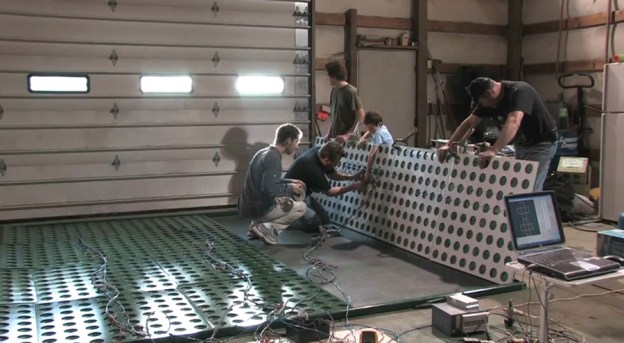
Based out of northern Idaho, Solar Roadways was awarded a $750,000 grant from the Federal Highway Administration earlier this year to design and build a solar parking lot, the next phase of development for the green technology. During phase one of the project, the founders of Solar Roadways used an initial grant of $100,000 from the federal government to construct a 12 by 12 foot prototype of the technology. The first prototype is constructed out of LED lights, solar panels and a variety of heating elements. All of these parts are encased in a a type of glass that’s durable, doesn’t reflect a glare from the sun or headlights and has the same traction as asphalt.

Company founders Scott and Julie Brusaw are estimating that building and installing the panels will cost three times what asphalt costs, but slowly pay for itself over time if the electricity is put to good use. The couple is hoping that phase two of the project will yield positive results. They plan to test the parking lot in a variety of conditions and hopefully roll out the product to the public for installation on driveways, patios and sidewalks.


